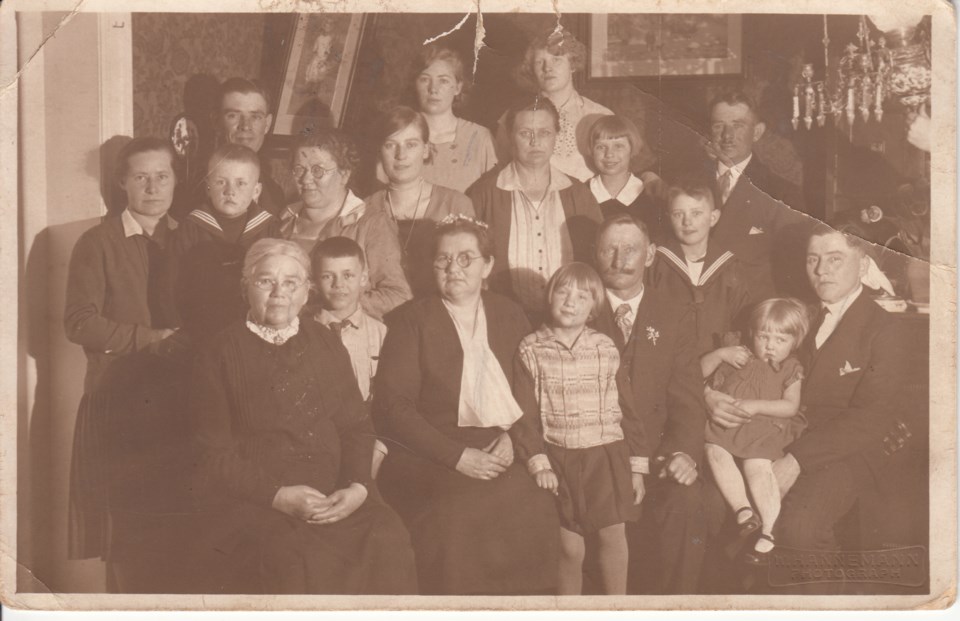Family is a familiar word. It comes from the Latin familia, meaning members of a household, not necessarily all related. Family is associated with concepts such as belonging, inclusive, united, links and ties. It’s like arms embracing many things, small, large, different, bringing them together. It promises continuity.
Families exist in all of nature. We humans are part of nature, and like the rest of nature, we need diversity to thrive. Family, in the sense of multiple generations, provides diversity. Ghent University in Belgium is developing an intergenerational initiative called the Grandpact Project, which focuses on promoting physical activity between grandparents and grandchildren. Greet Cardon, who leads the project, stated, “Bringing grandparents and grandchildren together to be active is expected to foster meaningful social interactions and promote mutual learning and understanding. It may also lead to children growing up with a more positive attitude toward older adults.”
In our modern western society, economic systems have played a major role in shaping our lives, and social changes have followed to fit the new shapes. The changes have often led to our lives becoming more solitary, downgrading the importance of the family unit. Modern technologies have done much to increase that sense of isolation, even when they’ve contributed various benefits. Fortunately, people are slowly waking up to the realization that the family is in danger of becoming as outmoded a concept as the rotary dial telephone.
We humans are social creatures, and therefore we don’t do well if we’re lonely (unless, of course, we’re hermits). I became acutely aware of the anxiety and depression that isolation can cause when I lived in Florence and would regularly visit my aunt whose home was in a south German village where many of the residents were elderly and widowed. The lucky ones had their multigenerational families living nearby.
A few decades ago something happened in the village that made a big difference. The Liebenau Foundation, a German non-profit organization (founded 1870) working in social welfare, constructed a condominium complex, several stories high, on the village high street. The building comprises 21 units, to house a mix of seniors (including ones needing assistance), young families, couples and single parents. A key factor of the Liebenau housing project is its multigenerational composition.
I asked a friend if B.C. had anything that was organized similarly, offering accommodation to a mix of generations. To the best of my knowledge, the European model hasn’t made it across the ocean. Co-operatives and cohousing came the closest to what I knew from Germany. However, their focus is not on mingling different generations of residents, but on the residents functioning as a community.
Sadly, the point at which a multigenerational situation could be critical for the quality of a person’s life is also the point at which it’s usually missing. I’m talking about living accommodations for the elderly, who tend to be weeded out of their homes and transplanted into facilities. These facilities go by various names – retirement homes, care homes, nursing homes, assisted living residences, senior living, old age homes, and so forth. Some people may enjoy this kind of segregation, but not all by far.
Many elderly (and a few not-so-elderly) people around the world suffer from dementia. In Canada, they’re often placed in nursing homes. They’re institutionalized. It must be terrifying for them. But now there’s a revolution underway, and once again Europe is in the vanguard. In 1993, in Weesp, The Netherlands, development began of a small village that was to become the world’s first “dementia village” (this label, which the Dutch don’t like, was created in 2013 by CNN). Called the Hogeweyk, the village was inaugurated in 2009. It has all the amenities of a real neighbourhood. To the people living there it has a reassuringly familiar air. It offers “residents (and their families) humanized care that feels more like home." Norway and Australia are going a step further in planning to include younger generations in their projects, to make the village “be a microcosm of the general community.” At present Canada has one “dementia village,” which is in Langley, B.C. It’s called the Village Langley and there are currently 75 residents, who are known as "villagers."
In April 2022 Ontario’s Liberal Party announced its intention of leading a revolution in elder care, which would allow seniors to continue living in their own homes rather than be extracted from their familiar surroundings and placed in long-term care facilities. I hope that politics can be put aside to let the revolution take hold and spread.
If we keep in mind that we humans are as much a part of nature as animals and plants, it doesn’t seem farfetched to see a parallel between what happens with the elderly and what happens in large-scale farming, where monoculture (growing a single crop year after year) has long been the established practice and is now one of the most controversial features of agriculture. Isn’t the segregation of the elderly from their families and communities simply the human equivalent of monoculture?
Sabine Eiche is a local writer and art historian with a PhD from Princeton University. She is passionately involved in preserving the environment and protecting nature. Her columns deal with a broad range of topics and often include the history (etymology) of words in order to shed extra light on the subject.



